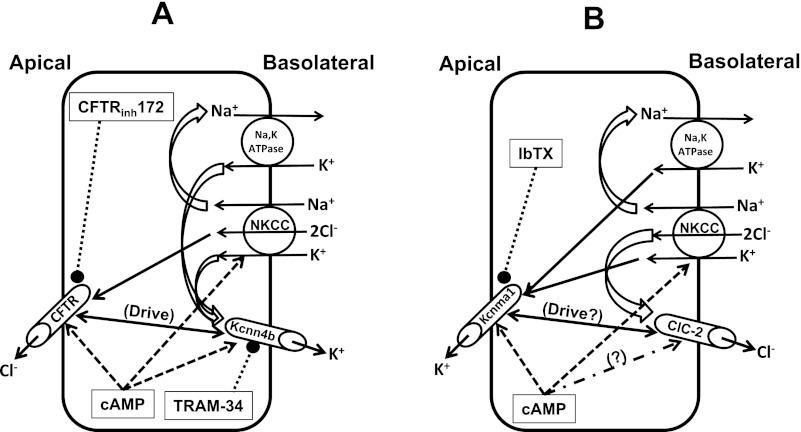Fig. 8.
Cellular models of cAMP-induced electrogenic Cl− and K+ secretion localized in different cell types in rat distal colon. A: coordinated activation of apical CFTR channels and basolateral Na-K-2Cl cotransporter (NKCC) and Kcnn4b channels regulates the cAMP-induced electrogenic Cl− secretion. Kcnn4b channels that mediate K+ exit provide the driving force (Drive) for cAMP-induced Cl− secretion, which is inhibited (see text) by blocking either Kcnn4b channels (using TRAM-34) or CFTR (using CFTRinh-172) but not by blocking Kcnma1 channels blocker (using IbTX). B: coordinated activation of apical Kcnma1 channels and basolateral NKCC and chloride channel 2 (ClC-2) (?) regulates cAMP-induced K+ secretion, which is inhibited by IbTX but not by CFTRinh-172 or TRAM-34 (see text). ClC2 has been shown to present in basolateral membranes of mammalian colon (20). Direction of transcellular electrolyte movements (solid arrows), cAMP-activation (dashed arrows), channel blockers (dotted bullets), electrolyte recycling (2-dimensional curvy arrow), and driving force (double-headed arrows) are indicated.

